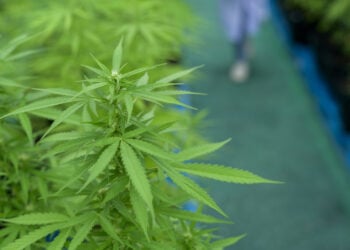If you’re feeling a bit dazed and confused in terms of which states are doing what, where, and how, as it relates to marijuana legalization, you are not alone. Marijuana (recreational use vs. medical use), THC, CBD, industrial hemp, decriminalization, rescheduling – all of these areas of discussion are intertwined and create some rather complex issues for law enforcement.
Currently, there are nine states, plus the District of Columbia, where marijuana is legal for recreational/adult use (over 21 years of age), and medical use. With the exception of four states, every state in this country, including Texas, has legalized some form of medical marijuana use. Idaho, Kansas, Nebraska and South Dakota have yet to legalize marijuana for any purpose.
Confusion about our marijuana laws, stems mostly from the fact that under federal law, marijuana remains a Schedule 1, controlled substance. So how is it that individual states are able to enact laws, which ignore The Federal Controlled Substance Act?
The short answer: The 10th Amendment of the U.S. Constitution. The 10th Amendment offers individual states the right to enact laws not specifically prohibited by the Constitution. In response to the 10th Amendment argument, marijuana prohibitionists are quick to counter with The Supremacy Clause.
The Supremacy Clause establishes that our nation’s Constitution, and the federal laws enacted pursuant to it, constitutes the supreme law of the land. Where conflict exists between federal law and state law, the federal law is controlling.
The bottom line: in light of the overwhelming support that Americans have shown in recent years, favoring medical marijuana as a safe and sensible alternative to this nation’s opioid crisis, the men and women who represent us in D.C. have a duty to reconsider the Controlled Substance Act, and reevaluate its effectiveness.
It’s worth noting that The Federal Controlled Substance Act was enacted in 1970, almost 50 years ago. The powers that be in 1970 classified Schedule 1 drugs based on their high potential for abuse, no medical use, and severe safety concerns. Marijuana was listed alongside other narcotics such as heroin, LSD, and cocaine. In addition, federal guidelines and restrictions regarding research and testing have made it almost impossible for scientists and researchers to study the plant. The only university allowed to do so is the University of Mississippi in Oxford, Mississippi.
In 2015, Texas Governor Greg Abbott, signed into law The Texas Compassionate Use Act, legalizing the cultivation, extraction, and sale of high CBD – low THC medical marijuana to patients suffering from intractable epilepsy. The combination of CBD and THC, interact with the body’s natural endocannabinoids, suppressing and considerably reducing the patient’s seizures. The law requires that the patient must have previously been prescribed FDA approved drugs that failed, and the medical marijuana prescription requires two neurologist’s signatures.
As a country reeling from an opioid crisis that has claimed the lives of thousands and caused painful addiction for thousands more over the past two decades, it appears the stage is set for a real unified, bi-partisan push for medical marijuana.
As a country reeling from an opioid crisis that has claimed the lives of thousands and caused painful addiction for thousands more over the past two decades, it appears the stage is set for a real unified, bi-partisan push for medical marijuana.
At the 2018, Texas State Republican Convention, held in San Antonio earlier this year, approximately 10,000 Texas Republican delegates showed up to set the party’s plank, and they included four pro-cannabis measures for the first time. Texas Republicans now join Texas Democrats in their desire to see the medical marijuana program increase to include more groups of patients. In addition, there is bipartisan support for decriminalization in instances where individuals are caught possessing four ounces of marijuana, or less; rescheduling marijuana at the federal level; and legalizing/recognizing industrial hemp as a new agricultural commodity.
With the 2019, Texas legislative session closely approaching, and with congressional mid-terms right around the corner, it will be interesting to see how the marijuana laws are addressed at both the state and federal levels. Will we continue to be dazed and confused, or will changes be made to help give us a clearer view? Time will tell. Daniel Clancy










